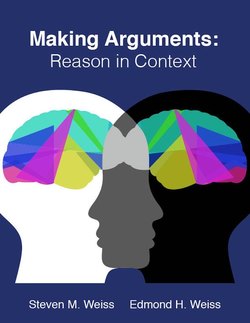Читать книгу Making Arguments: Reason in Context - Edmond H. Weiss - Страница 5
На сайте Литреса книга снята с продажи.
Argument as Presented in this Book
ОглавлениеFor as long as people have been teaching and learning this set of skills, the field has typically distinguished sharply between argumentation (meaning logic and dialectic) and persuasion (meaning rhetoric and the influencing of a particular audience). As a result, the subject is frequently divided into:
•The formal (critical thinking, logic, and fallacies), sometimes called inquiry, and
•The practical/applied (debate, delivery, adaptation, and analysis of the audience), sometimes called advocacy.
In a typical college course, argumentation is usually taught in both the Lee and Bailey versions simultaneously. The traditional course teaches both the formal and applied versions, inquiry and advocacy, side by side. Rarely, however, will a course or textbook in argumentation attempt to show that adherence to logical rules translates into success in arguing, or that a successful argument was the result of flawless reasoning. On the contrary, it is apparent that many effective arguments succeed without the force of reason, and, similarly, many well-formulated arguments fail utterly, unable to convince an audience.
A New Standard
When Lee and Bailey presented their respective views, each missed an opportunity to enrich the other’s viewpoint. (Incidentally, “enriching the other’s viewpoint” is a principal purpose of having arguments in the first place—although you would never guess it from watching political “debates” on television.)
Lee complained about the jury’s paying attention to a “petty” question. By doing so, Lee is accusing the audience, in the tradition of Aristotle’s Rhetoric, of being less than rational. Lee designed an argument for a “rational audience” and when the audience wanted the answer to a question other than the ones Lee was answering, that audience was tagged as non-rational. That is, they seemed immune to the Laws of Reason.
Conversely, but with the same mistaken exclusiveness, Bailey places her audience of jurors outside of the rational domain of the educated experts, lawyers and witnesses (including the judge) who populate the courtroom. She feels she must appeal to the jury directly, and sees the process of “winning” an argument as that of perhaps simplifying or “dumbing down” the argument, reducing it to a short list of simple talking points, understandable to the least sophisticated person in the audience, possibly triggering reactions that engage their feelings or prejudices.
